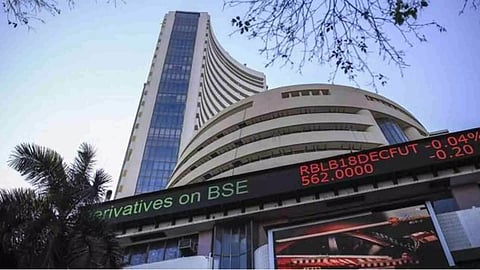

NEW DELHI: As we cross the half-year mark, the Sensex stock market index reached an all-time high of 65,240.57 on the first day of market opening in July. All-time highs once again reiterate the Indian growth story and the resilience of the Indian economy. It is admirable to see how the 'leaders' of India's top 30 companies have delivered outstanding shareholder returns over the last five years.
The David vs Goliath fight between Sensex and other BSE stocks
But, one puzzle stares us straight in the face. While the Sensex has compounded at an annual growth rate of almost 13 per cent in the last five years, a look at the rest of the BSE stocks outside the Sensex that have been listed for the last five years shows an annual decline of 1.16 per cent.
In fact, beyond the top 1000 companies outside the Sensex, the annualised return over the last five years has been minus 3.67 per cent. This surprising revelation raises a clear question regarding its implications for both companies and investors.
The answer to the above is, in fact, the biggest opportunity for India's public companies. As India's economy grows further and emerges as the fastest-growing major economy in the world, opportunities abound for companies and investors alike. So, what is the single biggest reason for this Sensex versus BSE conundrum? The two-worded answer is 'capital allocation'. The stocks in the Sensex are far better capital allocators than the non-Sensex stocks.
In simple terms, by capital allocation, the focus is on generating a high return on invested capital by investing in growth that comes with high margins by investing in one's own business, investing via acquisitions to get into newer markets to access newer profit pools, paying down debt, repurchasing existing shares or paying dividends.
The companies in the Sensex are able to do so highly effectively. Whether it is Reliance Industries' bet on Retail and Jio or HDFC Banks' investment in other small finance banks and NBFCs, we see excellent capital allocation driving Sensex to all-time highs.
For companies' management, public institutional investors and private equity investors, we lay out the playbook to tap into the underperforming companies and turn them into multi-bagger winners, generating market-beating IRRs and creating value for all. There are essentially three types of underperforming businesses that exist.
Companies with steady cash flow and low returns on equity
A company with steady cash flow combined but low returns on equity must reinvest their cash flow into higher-yielding opportunities in adjacent industries, focus on improved operational efficiency and increase cost-costing measures. This space has some exciting plays in the two-wheeler and tyre industries. Essentially, businesses with tremendous potential need better capital allocation decisions, such as paying dividends instead of investing in high-growth areas, as their industry value chain goes through tectonic shifts away from hardware towards software.
Strong brands or franchises hindered by bad strategic decisions
Companies that have lost focus through over-diversification into disparate businesses need to spin off unrelated divisions or sell non-core, underutilised, or underperforming assets. Additionally, these companies need to focus on their core area of strength to create market space for themselves. As consumer tastes change rapidly, these companies, especially in the consumer brands space, have been left behind looking at the rearview mirror. The opportunity to focus and allocate capital well can lead to exceptional returns.
Weak corporate governance
The third list is of companies that are perceived to have poor corporate governance. Companies need to realise that Integrity and Honesty are the best policies. From an economic perspective, a high corporate governance company has a much lower cost of capital. There is significant value to be unlocked by creating highly compliant corporate structures that allow for increased transparency.
For India to achieve double-digit growth in the next 10 years, the focus needs to go beyond the SENSEX. The real drivers of growth for India will be the mid-cap and small-cap companies that can deliver high growth. This also offers a huge opportunity for institutional investors and private equity players looking to invest in India - The Growth Capital of the world. Thus, capital allocation will be the most critical factor for the next phase of India's growth.